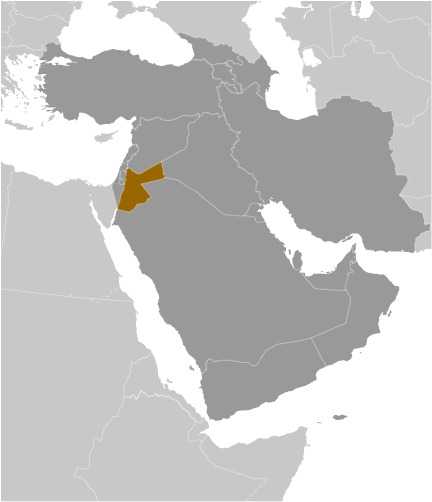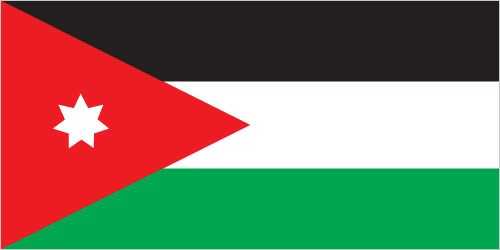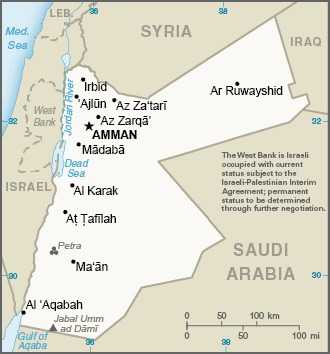Introduction
Background
After World War I and the dissolution of the Ottoman Empire, the League of Nations awarded Britain the mandate to govern much of the Middle East. In 1921, Britain demarcated from Palestine a semi-autonomous region of Transjordan. The area gained its independence in 1946 and thereafter became the Hashemite Kingdom of Jordan.
Geography
Area
total: 89,342 sq km
land: 88,802 sq km
water: 540 sq km
Climate
mostly arid desert; rainy season in west (November to April)
Natural resources
phosphates, potash, shale oil
People and Society
Population
total: 11,174,024
male: 5,844,979
female: 5,329,045 (2024 est.)
Ethnic groups
Jordanian 69.3%, Syrian 13.3%, Palestinian 6.7%, Egyptian 6.7%, Iraqi 1.4%, other 2.6% (2015 est.)
Languages
Arabic (official), English (widely understood among upper and middle classes)
Religions
Muslim 97.1% (official; predominantly Sunni), Christian 2.1% (majority Greek Orthodox, but some Greek and Roman Catholics, Syrian Orthodox, Coptic Orthodox, Armenian Orthodox, and Protestant denominations), Buddhist 0.4%, Hindu 0.1%, Jewish <0.1%, folk <0.1%, other <0.1%, unaffiliated <0.1% (2020 est.)
Population growth rate
0.78% (2024 est.)
Government
Government type
parliamentary constitutional monarchy
Capital
name: Amman
Executive branch
chief of state: King ABDALLAH II (since 7 February 1999); Heir Apparent Crown Prince HUSSEIN (eldest son of the monarch, born 28 June 1994); the monarchy is hereditary
head of government: Prime Minister Bisher AL-KHASAWNEH (since 7 October 2020)
Legislative branch
description: bicameral National Assembly or Majlis al-'Umma consists of:
Senate or the House of Notables or Majlis al-Ayan (65 seats; members appointed by the monarch to serve 4-year terms)
Chamber of Deputies or House of Representatives or Majlis al-Nuwaab (130 seats; 115 members directly elected in 23 multi-seat constituencies by open-list proportional representation vote and 15 seats for women; 12 of the 115 seats reserved for Christian, Chechen, and Circassian candidates; members serve 4-year terms)
Economy
Economic overview
low growth, upper middle-income Middle Eastern economy; high debt and unemployment, especially for youth and women; key US foreign assistance recipient; natural resource-poor and import-reliant
Real GDP (purchasing power parity)
$107.11 billion (2022 est.)
$104.571 billion (2021 est.)
$100.883 billion (2020 est.)
Real GDP per capita
$9,500 (2022 est.)
$9,400 (2021 est.)
$9,200 (2020 est.)
Agricultural products
tomatoes, milk, chicken, potatoes, cucumbers/gherkins, olives, watermelons, peaches/nectarines, sheep milk, chilies/peppers (2022)
Industries
tourism, information technology, clothing, fertilizer, potash, phosphate mining, pharmaceuticals, petroleum refining, cement, inorganic chemicals, light manufacturing
Exports
$20.335 billion (2022 est.)
$13.87 billion (2021 est.)
$10.444 billion (2020 est.)
Exports - partners
US 20%, India 14%, Saudi Arabia 7%, China 6%, Iraq 6% (2022)
Exports - commodities
fertilizers, garments, phosphates, jewelry, phosphoric acid (2022)
Imports
$29.955 billion (2022 est.)
$23.321 billion (2021 est.)
$18.424 billion (2020 est.)
Imports - partners
China 17%, UAE 12%, Saudi Arabia 12%, India 6%, US 4% (2022)
Imports - commodities
refined petroleum, cars, gold, crude petroleum, jewelry (2022)
Exchange rates
Jordanian dinars (JOD) per US dollar -
Exchange rates:
0.71 (2022 est.)
0.71 (2021 est.)
0.71 (2020 est.)
0.71 (2019 est.)
0.71 (2018 est.)
Page last updated: Tuesday, May 07, 2024




